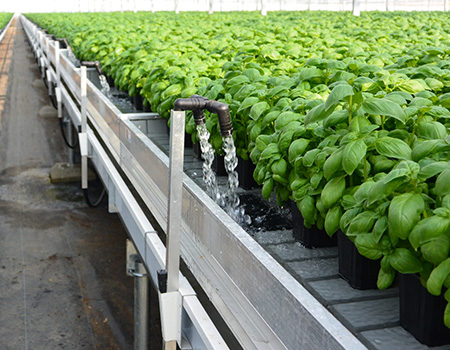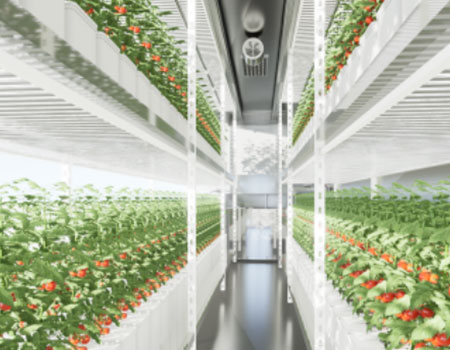Kuwait is a country with extremely high degree of desertification. It is located in the Middle East and has a desert climate. It is extremely hot in summer and cold and dry in winter. The annual precipitation is very limited, only about 100 mm. This extreme climate condition poses serious challenges to the agricultural development of Kuwait. Due to its unique geographical location and natural environment, Kuwait's agricultural development has always faced enormous challenges. However, after long-term efforts and attempts, Kuwait's agricultural level has also made certain progress.
In order to promote agricultural development, Kuwait has been committed to introducing advanced agricultural technologies. Hydroponic cultivation technology is one of the new agricultural technologies that Kuwait focuses on developing.
Hydroponics is a new type of soilless cultivation mode that suspends and fixes plant roots in nutrient solutions, ensuring the normal growth and completion of the plant's life cycle. The nutrient solution used in hydroponic culture not only has the effect of providing nutrients and improving water quality for plants, but also can replace soil to provide water, fertilizer, air, heat and other growth factors for plants, which can meet many conditions required for the growth of hydroponic plants in soilless cultivation. According to the yield of crops, different soilless cultivation nutrient solutions can be formulated to meet the different needs of different growth nodes of crops.

The development trend of hydroponic cultivation is very fast, and vertical farms, container farms, and hydroponic greenhouses all have a place for hydroponic technology. The vast majority of vegetables can be cultured in water, taking leafy vegetables as an example.
1. Annual production
Leaf vegetables are not easy to store, but in order to meet market demand, they need to be produced throughout the year. Traditional leafy vegetable soil planting is relatively cumbersome, while hydroponic planting only requires the seedlings to be implanted in the hydroponic planting system. For example, lettuce can be sown, planted, and harvested at any time, continuously producing without interruption.
2. Solve vegetable off-season supply
Leaf vegetables generally have short plants and do not require additional support facilities, so the investment in facilities is smaller than that of fruit and vegetable soilless cultivation. Hydroponic vegetables have a short growth cycle and fast turnover. Hydroponics, also known as facility production, is generally not easily damaged by typhoons. Farmers in coastal areas who can supply fresh vegetables during the typhoon season often earn higher profits.

3. No need to replace nutrient solution midway, saving fertilizer
Due to the short growth cycle of leafy vegetables, if no major physiological diseases occur midway, it is generally only necessary to prepare a nutrient solution once during planting and harvesting, without the need to replace the nutrient solution midway. Due to the long growth period of fruits and vegetables, even without major physiological diseases, in order to ensure the balance of nutrients in the nutrient solution, it is necessary to update the nutrient solution in half or in full.
4. High economic benefits
Hydroponic leafy vegetables can avoid continuous cropping obstacles, have high multiple cropping index, and have high production economic benefits. For this reason, leafy vegetables are often cultured in water.
With the development of technology, soil is no longer a necessity for modern agricultural development, and its position in the agricultural planting industry is gradually being replaced by other substances. And this new planting method that is detached from the soil is the popular soilless cultivation in recent years, and hydroponic cultivation is the most popular planting mode of soilless cultivation technology. Hydroponic cultivation has become a popular trend in agricultural development in many countries.








.jpg)
